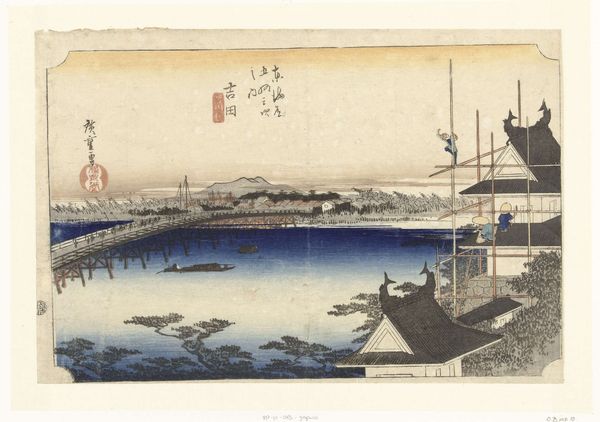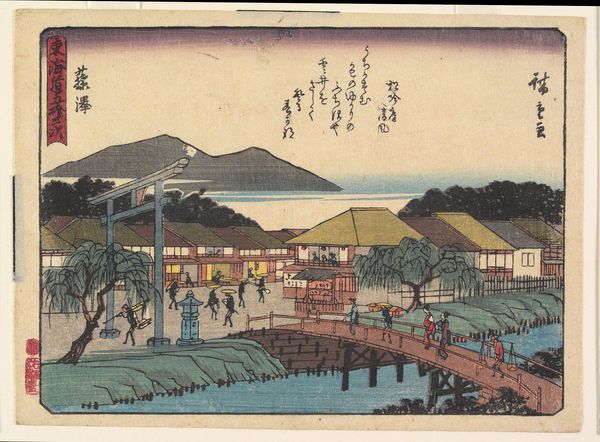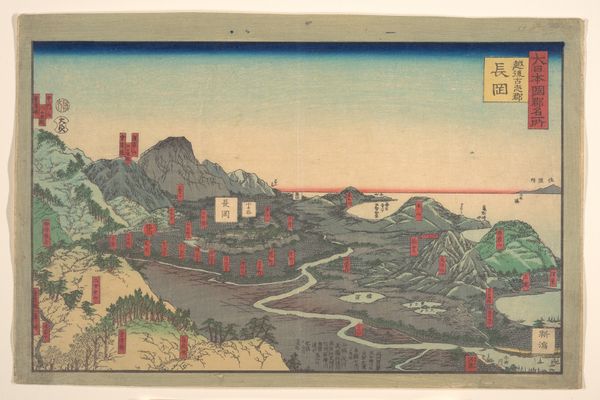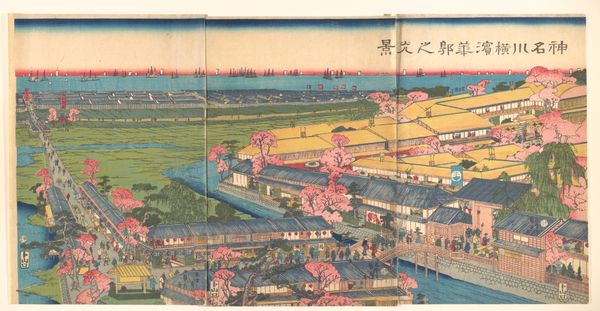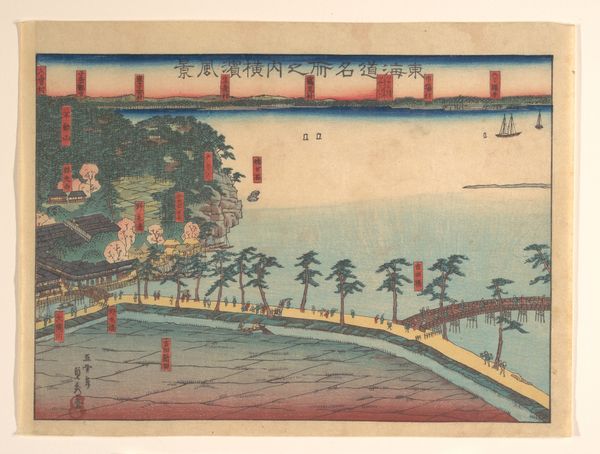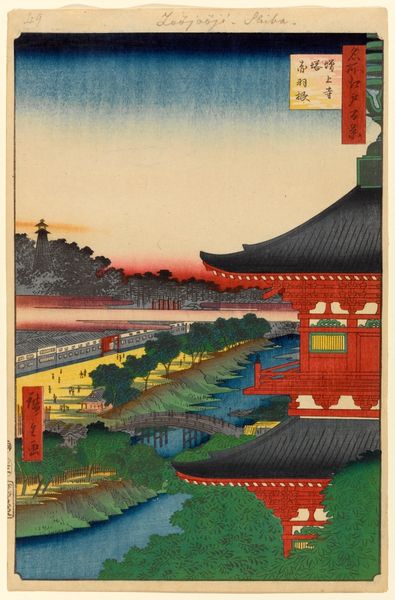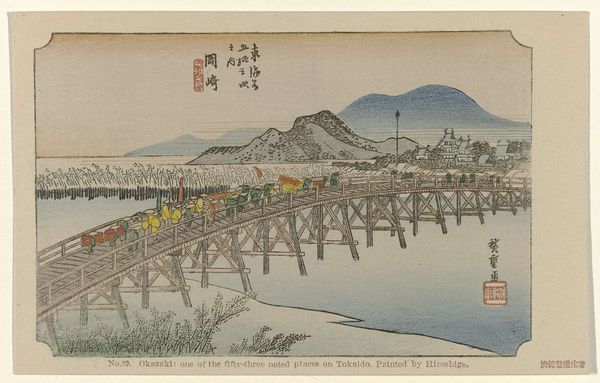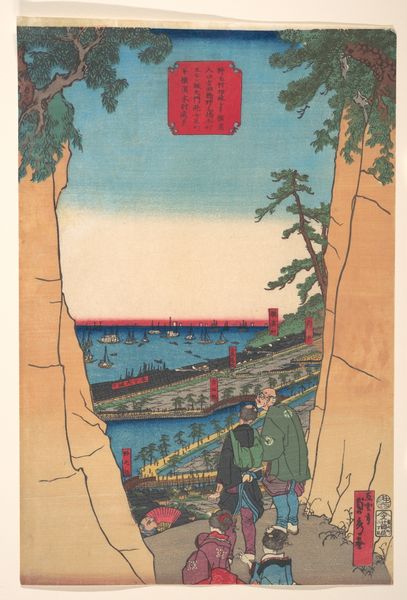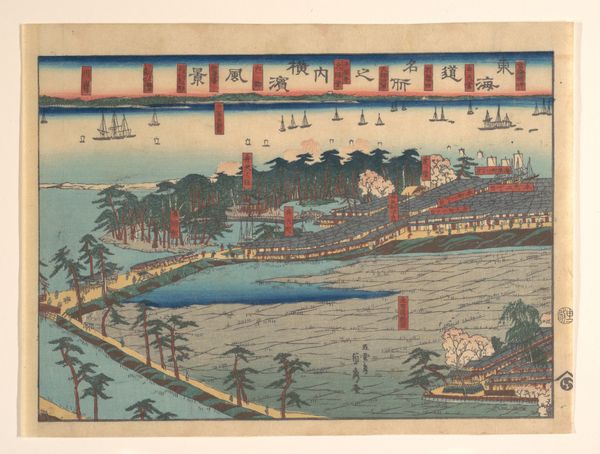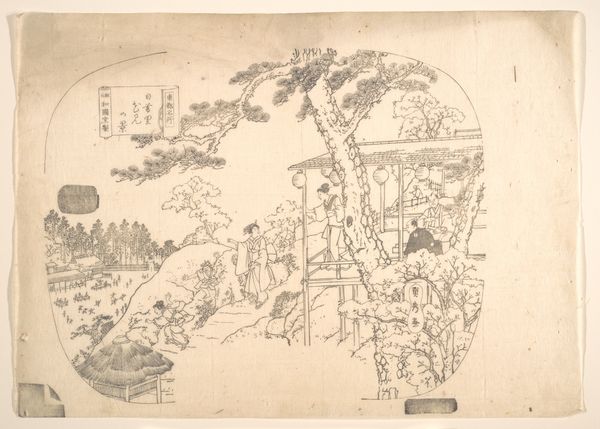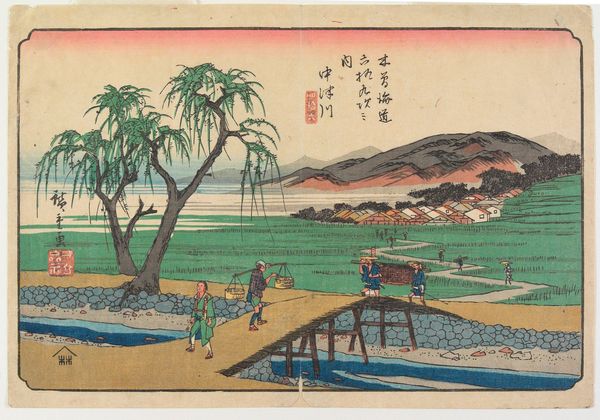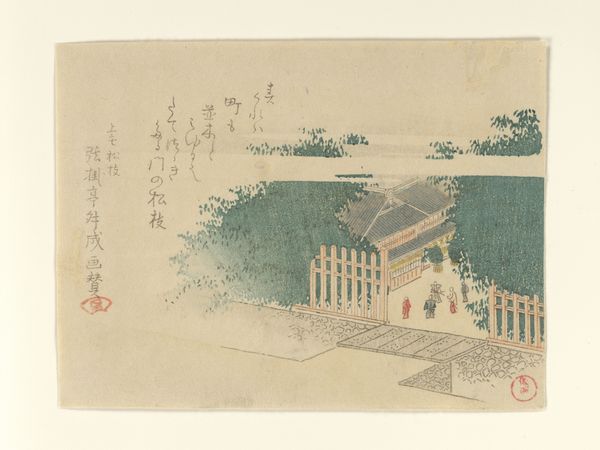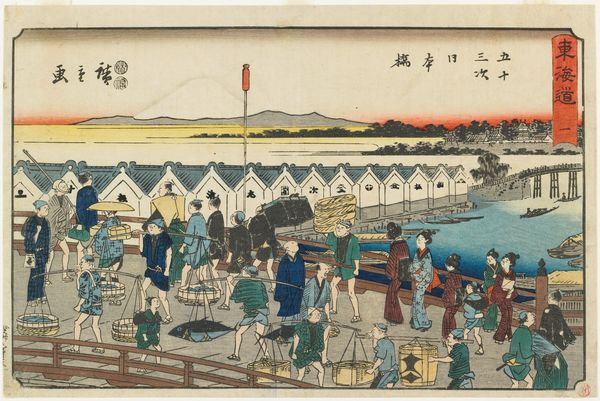
Train Coming Back to the Takanawa Station after 1872
0:00
0:00
Dimensions: 8 3/4 × 10 3/4 in. (22.2 × 27.3 cm) (image, sheet, uchiwa-e)
Copyright: Public Domain
Kawabata Gyokushō made this woodblock print, Train Coming Back to the Takanawa Station, sometime in the late 19th or early 20th century. It is an image that captures a transformative moment in Japanese history. Gyokushō shows the new technology of the steam train as it traverses a coastal landscape, a potent symbol of Japan's rapid modernization during the Meiji era. This period saw Japan opening its doors to the West, embracing industrialization, and overhauling its social and political structures. The train itself would have been an imposition, slicing through the established social and natural order of things. This print might have served to popularize the technology, or it may have aimed to soothe anxieties about these sweeping changes. To fully grasp the significance of this print, one must delve into Japan's institutional and economic history during the Meiji era. Research into period newspapers, government documents, and business records would provide valuable context for understanding the complex interplay between tradition and modernity that this artwork encapsulates. Ultimately, this artwork's meaning is contingent on its historical and social context.
Comments
No comments
Be the first to comment and join the conversation on the ultimate creative platform.

